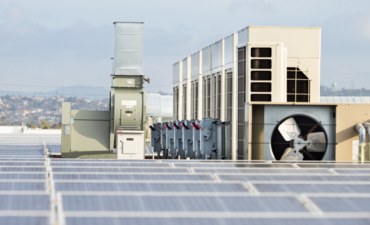
Natural disasters and emergencies are often spontaneous, unplanned events, which is why taking strategic measures to prevent them is such a challenge.
What was once a four-month fire season, fire-prone areas are now faced with changing climate conditions and a new reality: a year-round occurrence of wildfires. The potential devastating impacts from wildfires present many challenges for communities, businesses, and facilities, which need to be addressed by disaster preparedness plans.
For local municipalities, these plans should include critical infrastructure assessments to mitigate loss of essential services and infrastructure. Specifically, facilities like wastewater treatment plants have a myriad of impacts that need to be addressed from a year-round threat of wildfires.
The Wildfire Impact
Charged with the collection and treatment of wastewater from homes, businesses, and industries, municipal wastewater treatment plants provide critical services regarding treating water for discharge or reuse. Wildfires can disrupt a treatment plant's operations with many impacts such as:
- Infrastructure damage to the facility or distribution system due to fire or firefighting activities
- Loss of power to the facility
- Volume of stormwater feeding the sewer system
- Debris/contaminants in stormwater feeding the sewer system
- Blockage and dirtying of pumps
The corresponding costs associated with each of the above effects have great significance as well. Physical damage to the facility can cost millions of dollars that a plant does not have to spend. Additionally, the loss of power not only interrupts service, but can have consequences for the machinery. The system may also not be able to accommodate the increased volume of stormwater that can include debris and contaminants — putting additional pressure on the system and incurring increasing costs to remove blockages and clean the system.
So, how can municipal wastewater treatment plants prepare for disasters and address the effects from emergencies when they occur?
The Need for Resilience
Resilience is defined as the ability to recover from or adjust easily to misfortune or change. As part of a disaster preparedness strategy, resilience is the ability to prevent, change, or adapt to an emergency event. For municipal wastewater treatment plants, this means maintaining operations, preventing disruptions, minimizing the impact to city residents and businesses, and addressing economic effects when a natural emergency occurs.
Natural disasters and emergencies are often spontaneous, unplanned events, which is why taking strategic measures to prevent them is such a challenge. However, wastewater treatment plants can achieve resiliency through different solutions:
- Battery-supplied and microgrid power
- Flexibility in flow
- Improved filtration
Through a battery backup supply, battery UPS, battery-supplied generator, microgrid system, or a combination solution, the facility can be insulated from the problems of lost power. Additionally, increasing flexibility in the design flow rate can allow the system to accommodate the burden of added flow, so that it does not damage the system. Similarly, the system design can help anticipate the need for the required filtration resulting from these unplanned events. Although resiliency can be achieved through different solutions, it is often a challenge to invest in and fund.
Investing and Funding Resilience
Investing in resilience infrastructure isn't just as simple as purchasing a generator or connecting to microgrid power. Achieving resiliency can be a lengthy process and includes assessments, evaluations, coordination with multiple teams, and of course — significant funds. However, there isn't just an upfront cost, there is also an economic value that comes from not incurring costs associated with wildfire impacts. Therefore, the value of resilience also stems from cost-savings in light of an emergency. For municipal wastewater treatment plants, this can be considerable for budgets and investments.
How to Fund
Resilience infrastructure can be funded in a variety of ways, including financial engineering, relief funds, performance contracting, and Energy as a Service. Specifically, through funding strategies, grants, and resiliency-as-a-service, municipalities can choose which financial mechanism is best suited for their facility and community.
With funding implications and many challenges, facing the reality of wildfires as a year-round occurrence can be addressed through disaster preparedness planning, resiliency, and energy solutions.
Business Acquisition Manager
As Business Acquisition Manager, Maureen McDonald is responsible for developing relationships with clients across the United States to promote energy efficiency, renewable energy, and sustainability initiatives. With over 40 years of experience in the engineering field and nearly 20 specifically, as an energy professional, Maureen offers an immense depth of knowledge that has been instrumental in the development of a variety of custom-designed energy solutions to create increased overall energy efficiency and reduced operational expenses.




